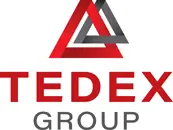SUSTAINABILITY
The use of sustainable approaches and materials is an integral part of our business process, as prerequisites for many clients but also because we genuinely take interest on the impact of our work on the local environment, but also on a more global scale.
We are focused on material minimisation through initiatives such as adaptive reuse of resources and materials where possible, energy management and minimisation of waste. Our first preference is to always select products from local suppliers who integrate sustainable practices throughout all aspects of their production processes and supply chain, which greatly reduces our carbon footprint.
Examples of sustainable practices/materials we have used include:
Nabers Ratings – this was used on the Selby Street Office and Wembley Golf Club. This is a National Australian Built Environment rating system that measures the environmental performance of Australian buildings, tenancies and homes. It measures the energy efficiency, water usage, waste management and indoor environmental quality of a building or tenancy and its impact on the environment.
Hebel® – For the Claremont on the Park project, we installed Hebel® panels which is a strong, versatile, high performing product made from autoclaved aerated concrete. Hebel® panels have superior insulation qualities compared to other masonry products and has a 30% lower environmental impact than concrete or brick veneer. They also use 60% less embodied energy and therefore produces 55% less greenhouse emissions, making them a more sustainable, environmentally friendly choice of building material.
Titan Hoarding – Our use of Titan Hoarding has a standard policy to reduce our environmental footprint where possible. All hoarding materials are reused where possible and when they reach the end of their commercial life, they are donated to schools, workshops and associations such as the Men’s Shed. The combination of Titan’s recycling policy, Tedex’s sustainability strategies and the durability of Titan’s structural support system, results in environmentally sustainable hoarding systems.











